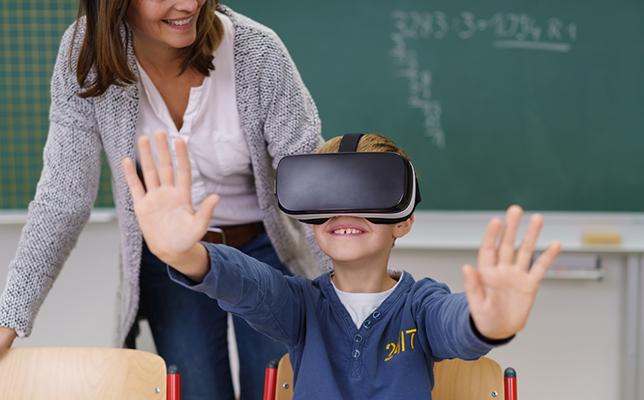10 ways Virtual Field Trips Expand Classroom Learning Without leaving School
Are you searching for innovative ways to enrich your classroom learning experiences without the hassle of organizing conventional field trips? Virtual field trips are revolutionizing education by bringing mesmerizing destinations, expert knowledge, and interactive experiences straight into the classroom.Whether you’re teaching elementary students or guiding high schoolers, virtual field trips provide unprecedented access to educational resources that can transform lessons and inspire lifelong learners.
Why Choose Virtual Field Trips for Classroom Learning?
With advances in edtech, it’s easier than ever to transport your students to faraway places—without ever stepping outside your school’s walls. Virtual field trips not only cut costs and logistical hurdles but also open doors to immersive learning and global perspectives.
- Cost-effective: No need for buses, permission slips, or packed lunches.
- Accessible: Great for students with mobility limitations or health concerns.
- Versatile: Cater to different ages, curriculums, and learning objectives.
- Engaging: Utilizes innovative technology to keep students involved.
10 Ways Virtual Field Trips Expand Classroom Learning
Here are the top 10 reasons why virtual field trips are taking modern education to new heights:
1. Bring Real-World Experts Into the Classroom
Many virtual field trips are hosted by scientists,historians,or professionals in their field,allowing students to interact directly with experts. For example, a livestream from a NASA scientist can inspire future astronomers by answering students’ real-time questions.
2. Access to Global Destinations
Your class can explore world-famous sites such as The Louvre in Paris,the pyramids of Egypt,or the rainforests of Costa Rica—all in a single semester.These authentic experiences are only a click away.
3. Enhanced Engagement With Interactive Content
Virtual field trips frequently enough include interactive elements such as quizzes, 360-degree tours, or hands-on activities.This active learning promotes better retention and critical thinking.
4. Promote Inclusivity and Equal Access
Traditional field trips can exclude students due to physical, financial, or geographical barriers. Virtual field trips ensure that every student has the possibility to participate fully, making your classroom more equitable.
5. Support Cross-Curricular Integration
A single virtual experiance can address multiple curriculum areas—such as, exploring a volcano can touch on geography, science, language arts, and art. This cross-disciplinary approach maximizes instructional time and helps students make meaningful connections across subjects.
6.Foster 21st Century Skills
Navigating virtual platforms, collaborating online, and engaging with digital resources nurture essential skills such as digital literacy, problem-solving, and communication—preparing students for future success.
7. On-demand Flexibility and Customization
Unlike traditional trips, virtual field trips can be paused, revisited, or adapted to fit your class schedule and pacing. teachers have the flexibility to tailor the experience based on their students’ interests and needs.
8. Immediate Access to Supplemental Resources
Most virtual field trip providers offer downloadable lesson plans, discussion guides, and activities. This makes integration seamless and extends the learning beyond the virtual experience.
9. Safe and Controlled Environment
Safety is a primary concern for any field trip. Virtual experiences eliminate risks and logistical worries, creating a controlled environment where learning can thrive.
10. Stimulate Curiosity and Inspire Lifelong Learning
By digitally “visiting” places students might never see in real life, virtual field trips awaken curiosity about the world, different cultures, and new ideas—often sparking interests that extend well beyond the classroom.
Key Benefits of Virtual Field Trips in Education
Benefits for Teachers
- Easy to plan and integrate into existing lesson plans
- Boosts student engagement and participation
- Offers differentiation for varied learning needs
- Accessible analytics and feedback tools in many platforms
Benefits for Students
- First-hand look at topics studied in the curriculum
- Chance to interact with guides and experts
- Exposure to real-world applications of classroom knowledge
- Practice using modern digital tools in a guided setting
How to Make the Most of Virtual Field Trips: Practical Tips
- Set clear learning objectives in advance to align the trip with curriculum goals.
- Preview the trip and review associated materials so you can guide your students effectively.
- Engage students with pre-trip discussions to build excitement and context.
- Encourage note-taking or use of digital journals during the trip for reflections and observations.
- Debrief after the trip with group discussions or projects that reinforce new learning.
Case Study: A Virtual Trip to the Smithsonian National Museum of Natural History
At Lincoln Elementary School, Mrs. Harper’s fifth-grade class participated in a virtual tour of the Smithsonian National Museum of Natural History. Equipped with Chromebooks, students navigated 360-degree panoramic galleries, identified specimens, and attended a live Q&A with a museum paleontologist. Mrs. Harper noticed her students were more engaged, asked more thoughtful questions, and showed improved retention on assessment quizzes compared to previous years when the lesson was textbook-only.
First-Hand Experience: Student Perspectives
“I loved seeing the dinosaur fossils so close up! It was like being in the museum,but we didn’t have to fly to Washington,D.C.”
— Samantha, Grade 5
“The expert answered my question about volcanoes. I never thought I’d get to talk to a real scientist!”
— Diego, Grade 6
Popular Platforms for Virtual Field Trips
Conclusion: The Future of Field Trips is Virtual
Virtual field trips are changing the landscape of classroom education. They offer not just convenience, but a powerful way to expand classroom learning, meet various learning needs, and foster a global, inclusive outlook. By taking full advantage of what virtual experiences have to offer, educators can inspire curiosity, deepen understanding, and make classroom learning more memorable and meaningful—no school bus required!
Invest in virtual field trips and elevate your teaching strategy, ensuring your students benefit from immersive, world-class learning—all from the comfort and safety of your school.

